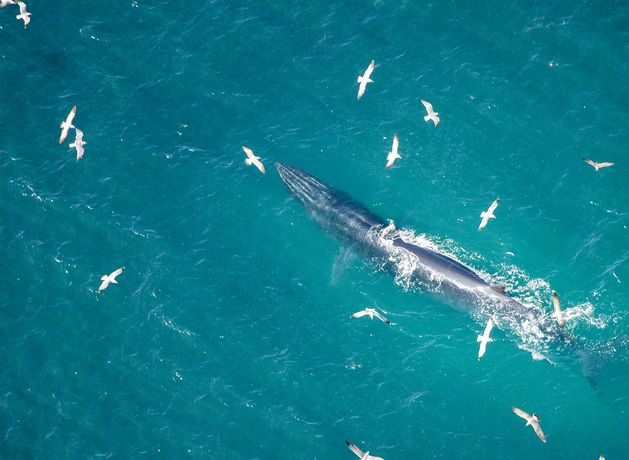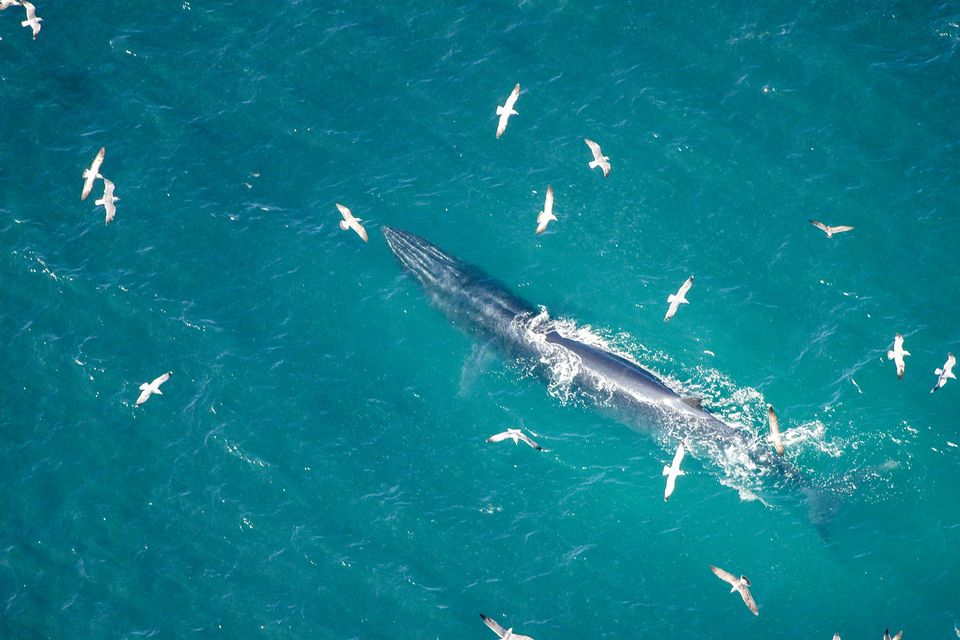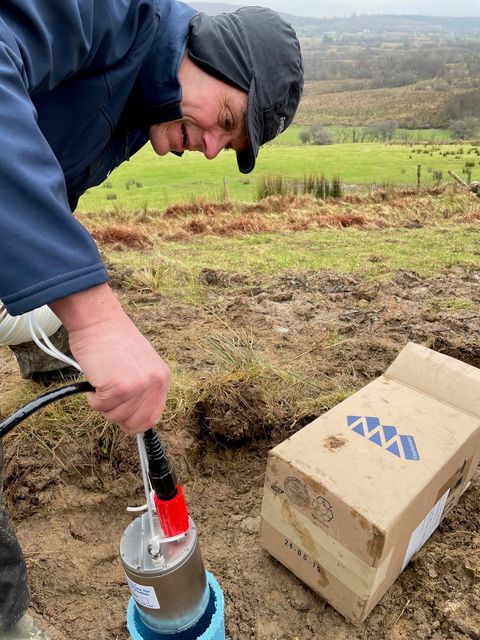It has long been known in scientific circles that fin whales, the second largest animal on the planet, hit underwater singing notes as loud as the 190-decibel roar of a jet engine.
Now, scientists in Ireland have discovered the songs from these sea giants are causing the earth to move under our feet up to five kilometres from shore.
Physicists at the Dublin Institute for Advanced Studies (DIAS) have found the unmistakable, low-pitched notes, or calls from the whales, have been showing up not just on seafloor instruments, but on land-based seismometers that are also used for measuring earthquakes.
Dr Martin Mollhoff, the study’s lead author and director of seismic networks at DIAS, said: “Literally, the ground goes up and down. You sit there in your house, and if you’re close enough, within a few kilometres of the coast at Galley Head in Cork or Bunmahon in Waterford, then everything moves. It’s so small that we don’t feel it, but the seismometers are so sensitive that they do.”
Today’s News in 90 Seconds – April 27
The remarkable discovery, which has just been published in the Scientific Reports journal, was made following a passing comment at a meeting.
Geophysicists were reviewing data from seismometers placed on the sea floor: deep-ocean instruments designed to listen for the rumble of earthquakes and the subtle tectonic shifts beneath the seabed.
Dr Martin Mollhoff, director of seismic networks at the Dublin Institute for Advanced Studies, installs a seismometer in the ground
“Seismologists are not looking for animal signals, but again and again, we would notice these whale calls,” Dr Mollhoff said.
At the end of the meeting, Chris Bean, senior professor and head of geophysics at DIAS, asked if a seismometer on land very close to the sea would pick up the whale songs as the notes travel vast distances underwater.
Working with the Irish Whale and Dolphin Group, Dr Mollhoff discovered that blue whales didn’t come close to shore, but fin whales, which can grow to around 24 metres (the length of two double-decker buses), can be found on the southern coastline in autumn and early winter.
“I didn’t realise the second largest animal on the planet comes this close, within a few hundred metres,” Dr Mollhoff said.
Looking at data from sensitive seismic equipment on machines at stations in Galley Head and Bunmahon, both whale haunts, he thought it was a false theory.
“But then the next day, I had another look and I could see these signals.
“It’s very obvious, it’s a unique pattern. It’s quite amazing,” he said.
Seismic instruments don’t record sound the way a microphone does. They detect vibrations and tiny movements in the ground.
“The instruments are sensitive enough to pick it up, and the sounds are loud enough to be picked up, but you can’t hear them as a human. They’re too weak,” Dr Mollhoff said. He added that the frequency of a fin whale’s sound is around 20 hertz, just at the threshold of human hearing.
Along with finding whale song data recorded on land off the Cork and Waterford coasts, the study team also found data showing whale notes recorded offshore in Monaco and the Antarctic.
“In different regions of the planet, the fin whales have different kinds of songs – it’s not really known whether they’re dialects or what the meaning is – and this can change over time as well. But often in one population, they all do the same thing when they communicate,” Dr Mollhoff said.
The earthquake-monitoring machines, although limited to detecting whales within four to five kilometres from the shore, could prove vital in protecting the animals near the coast where they are most vulnerable to ship traffic and noise pollution.
Analysing past seismic records around the world could also unlock fascinating new insights into the behaviour, and the song catalogue, of one of the giants of the sea.
“One probably should start looking now through the worldwide, global seismic data that was collected at stations close to the coast, and presumably, in some, you will find these whale songs,” Dr Mollhoff said.
#amazing #earth #moves #scientists #whale #songs #register #seismometer #5km #inland









